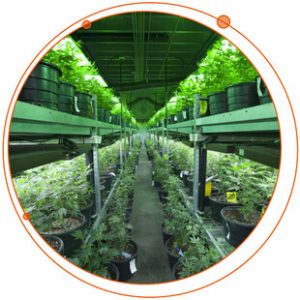 The First in a Three-Part Series
The First in a Three-Part Series
Welcome to the first in a series of blogs from the cannabis team at SCIEX, designed to bring you up to speed and put you in the lead of the recently legalized cannabis market in Canada.
The Canadian cannabis market has taken the plunge into relatively unchartered waters. On October 17, 2018, the Cannabis Act came into force making Canada the second and largest country with a legal national marijuana marketplace. This move will not only revolutionize the market in Canada but will become the test case for other countries that follow. The world is watching, and the stakes are high!
The Journey Through Health Canada’s Regulations
So how did we get here? Cannabis was banned in Canada in 1923 until regulated medical cannabis became legal in 2001. After he was elected Prime Minister in 2015, Justin Trudeau initiated his campaign pledge to keep marijuana away from underage users and reduce related crime. In June 2018, the Senate passed the ‘historic’ Bill C-45, otherwise known as the Cannabis Act.
It is estimated that 19% of Canadians consume cannabis, which much higher than the 4% worldwide average. It stands to reason that the government wants to control this growing market and leave behind what some have coined as a ‘failed model of prohibition.’ The goals are very clear:
- Keep cannabis out of the hands of youth
- Keep profits out of the hands of criminals
- Protect public health and safety by allowing adults access to legal cannabis
The Act provides a strict legal framework for controlling the production, distribution, sale, and possession of cannabis across Canada. The current program for accessing cannabis for medical purposes will continue under the new Act and licenses will be transferred.

A Big Shift for The Cannabis Supply Chain
As medical cannabis has been legal for 17 years, authorized producers are already familiar with Health Canada’s testing standards, but what does a fully regulated landscape look like and how can licensed Canadian analytical labs (or those applying for a license) stay ahead of the curve?
As we have seen, things won’t change overnight from a buyer perspective. The hope of walking straight into a shop from October 17 to pick up their favorite blend has already been dashed by most Canadians. The biggest constraint is the supply chain’s ability to meet this new legalized demand; the question is why?
Firstly, the 120 federally licensed producers in Canada need more time to scale up, and there are many more applicants under the new Act waiting for their licenses to be issued. It will take time for production to ramp up to meet demand.
Secondly, cannabis needs to go through highly regulated processes between the producer and the consumer to protect public health and safety. Industry-wide rules and standards for producers of cannabis cover:
- Types of cannabis products available for sale
- Packaging and labeling requirements for products
- Standardized serving sizes and potency
- Prohibitions on the use of certain ingredients
- Good production practices
- Tracking to keep it out of the illegal market
- Restrictions on promotional activities
Producers need to check local laws in their province.
What Does All This Mean?
In short, cannabis products need to meet the grade for quality and safety. The way that the government is controlling this is through strict analytical testing, and this is where SCIEX comes in. We support licensed analytical testing labs, regulatory laboratories and licensed producers that need to perform a wide variety of tests to regulated standards with sophisticated high-performance liquid chromatography-tandem mass spectrometry (LC-MS/MS) solutions.
Read the next blog in our series to find out more about the required tests and how SCIEX can help.






 Contact Support
Contact Support
0 Comments